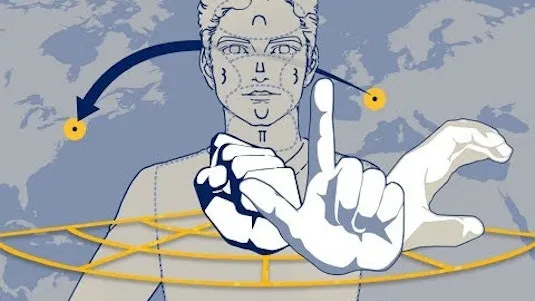
Sign Language Structure Learning and Change 
This course explores the structure, learning, and historical change of American Sign Language (ASL) and other sign languages, while examining the history of ideas about ASL. Research-based insights are integrated to provide a comprehensive overview. ▼
ADVERTISEMENT
Course Feature
![]() Cost:
Cost:
Free
![]() Provider:
Provider:
Edx
![]() Certificate:
Certificate:
No Information
![]() Language:
Language:
English
![]() Start Date:
Start Date:
Self paced
Course Overview
❗The content presented here is sourced directly from Edx platform. For comprehensive course details, including enrollment information, simply click on the 'Go to class' link on our website.
Updated in [March 06th, 2023]
This course provides an overview of the history, structure, learning, and historical change of American Sign Language (ASL) and other sign languages. Students will learn about the various layers of grammatical structure in all languages, how sign languages are structured, and how children and adults acquire the ability to understand and use a sign language. The course will also explore recent research on historical change in ASL and other sign languages, and how sign languages come into existence and change over time. Lecture videos are delivered in ASL with English subtitles and voiceover. This four-week self-paced course is designed to introduce students to the science of sign language research and, for fluent ASL signers, the history and structure of their own language. It will also expose students at the intermediate level to the fields of linguistics and the cognitive sciences.
[Applications]
Upon completion of this course, students should be able to apply the knowledge they have gained to their own research and to the study of sign language structure, learning, and change. They should also be able to use the skills they have acquired to better understand the structure of sign languages and to recognize the historical changes that have taken place in sign languages over time. Additionally, students should be able to use the knowledge they have gained to better understand the cognitive processes involved in sign language acquisition and use.
[Career Paths]
1. Sign Language Interpreter: Sign language interpreters are professionals who facilitate communication between people who are deaf or hard of hearing and those who can hear. They interpret spoken language into sign language and vice versa. This job requires a high level of fluency in both sign language and spoken language, as well as an understanding of the cultural and social aspects of the deaf community. The demand for sign language interpreters is increasing, as more organizations and businesses are recognizing the need for communication access for people with hearing impairments.
2. Sign Language Teacher: Sign language teachers are responsible for teaching sign language to students of all ages. They must be fluent in sign language and have a good understanding of the culture and history of the deaf community. They must also be able to create lesson plans and activities that are appropriate for their students. As the demand for sign language instruction increases, the need for qualified sign language teachers is also increasing.
3. Sign Language Researcher: Sign language researchers are responsible for studying the structure, learning, and historical change of sign languages. They must have a deep understanding of the structure of sign languages and be able to analyze data from sign language research. They must also be able to communicate their findings to the public in a clear and concise manner. As sign language research continues to grow, the demand for sign language researchers is also increasing.
4. Sign Language Translator: Sign language translators are responsible for translating written documents from one language to another. They must be fluent in both the source language and the target language, as well as have a good understanding of the culture and history of the deaf community. As more organizations and businesses recognize the need for communication access for people with hearing impairments, the demand for sign language translators is increasing.
[Education Paths]
1. Bachelor of Arts in Sign Language Studies: This degree program focuses on the study of sign language and its structure, learning, and historical change. Students will learn about the history of sign language, its structure, and how it has changed over time. They will also gain an understanding of the cognitive sciences and linguistics, and how they relate to sign language. This degree program is ideal for those interested in pursuing a career in sign language interpretation, teaching, or research.
2. Master of Science in Sign Language Research: This degree program focuses on the research of sign language and its structure, learning, and historical change. Students will learn about the history of sign language, its structure, and how it has changed over time. They will also gain an understanding of the cognitive sciences and linguistics, and how they relate to sign language. This degree program is ideal for those interested in pursuing a career in sign language research or teaching.
3. Doctor of Philosophy in Sign Language Studies: This degree program focuses on the study of sign language and its structure, learning, and historical change. Students will learn about the history of sign language, its structure, and how it has changed over time. They will also gain an understanding of the cognitive sciences and linguistics, and how they relate to sign language. This degree program is ideal for those interested in pursuing a career in sign language research, teaching, or interpretation.
4. Master of Arts in Sign Language Interpreting: This degree program focuses on the practice of sign language interpreting. Students will learn about the history of sign language, its structure, and how it has changed over time. They will also gain an understanding of the cognitive sciences and linguistics, and how they relate to sign language interpreting. This degree program is ideal for those interested in pursuing a career in sign language interpreting.
The development of sign language studies is an ever-evolving field, with new research and technology being developed to better understand the structure, learning, and historical change of sign languages. With the increasing demand for sign language interpreters, the need for qualified professionals in this field is growing. As such, degree programs in sign language studies are becoming more popular and are expected to continue to grow in the coming years.
Course Provider

Provider Edx's Stats at AZClass
Sign Language Structure Learning and Change examines the structure, learning, and historical change of American Sign Language and other sign languages, while examining the history of ideas about ASL. The course will give learners an in-depth understanding of sign language structure, learning and variation. Learners will understand the levels of grammatical structure in all languages, as well as the structure of sign language. They will also learn how children and adults acquire the ability to understand and use sign language. Finally, learners will explore the historical changes in American Sign Language and other sign languages, and how sign languages have existed and changed over time.
Discussion and Reviews
0.0 (Based on 0 reviews)
Explore Similar Online Courses

Javascript Course

Rigging practices for Blender and Threejs

Python for Informatics: Exploring Information

Social Network Analysis

Introduction to Systematic Review and Meta-Analysis

The Analytics Edge

DCO042 - Python For Informatics

Causal Diagrams: Draw Your Assumptions Before Your Conclusions

Whole genome sequencing of bacterial genomes - tools and applications

Learn & Master Sign Language

Indian Sign Language and Sign Quiz


Start your review of Sign Language Structure Learning and Change